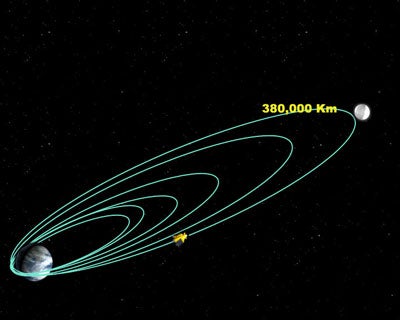After launch October 22, the spacecraft began an elliptical 7-hour orbit around Earth, between 158 and 14,205 miles (255 and 22,860 kilometers) above our planet. After five engine firings, Chandrayaan-1 spiraled outwards in increasingly elongated ellipses around Earth, until it reached its lunar transfer orbit November 3 at 6:26 p.m. EST.
In the fifth and last orbit-raising maneuver, the spacecraft’s 440 Newton liquid-fuel propelled engine fired for about 2.5 minutes. The lunar transfer orbit’s farthest point from Earth is about 236,121 miles (380,000 km).
The spacecraft Control Centre at the Indian Space Research Organization Telemetry Tracking and Command Network in Bangalore is monitoring the spacecraft. Chandrayaan-1’s Terrain Mapping camera (TMC) was successfully tested October 29 and provided its first images of Earth.
Chandrayaan-1 will approach the Moon November 8, 2008, when the spacecraft’s liquid-fuel propelled engine will be fired again. This maneuver, called lunar orbit insertion, will decelerate the spacecraft to allow the Moon’s gravity to capture it into an elliptical lunar orbit. A series of further maneuvers will then lower the altitude of Chandrayaan-1 around the Moon until it reaches its final 62-miles (100-km) circular orbit.










